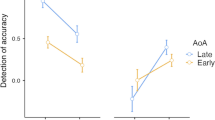Abstract
Bilingual information processing has been being used widely in many tasks such as Natural Language Understanding (NLU), Cross-Domain, Machine Translation (MT) and Bilingual Cognition. There still remain some problematic phenomena for understanding bilingual information processing. In this work, we aim to fully understand both the principles and methods of bilingual information processing by taking advantage of appropriate comparisons. The major idea of our proposed approach is both human and the machine can cooperate or interact with each other according to their characteristics. Concretely, it is composed of the following three steps: First, find issues from the Chinese-English bilingual translation at phrase sentence level alignment. The challenge in Chinese-English translation lies in an inconsistency of the meanings between the Chinese characters and the English words. Then, analyze the problems from the view of interdisciplinary, cross-domain and cross-industry. Finally, address leveraging human-machine to divide the task and coordinate with each other. As a result, not only we discover both parallel dual formalized approach of big and small strings, but also find and validate both the superiority and followed scientific principles of generalized bilingual information processing method.
S. Zou—Equal contributor.
Access this chapter
Tax calculation will be finalised at checkout
Purchases are for personal use only
Similar content being viewed by others
References
Álvarez, A.I.: Semantic differences as a function of type of bilingual and cognitive development (2018)
Anderson, J.A.E., Mak, L., Chahi, A.K., Bialystok, E.: The language and social background questionnaire: assessing degree of bilingualism in a diverse population. Behav. Res. Methods 50(1), 250–263 (2018)
Artetxe, M., Labaka, G., Agirre, E.: Learning principled bilingual mappings of word embeddings while preserving monolingual invariance. In: EMNLP (2016)
Artetxe, M., Labaka, G., Agirre, E.: Learning bilingual word embeddings with (almost) no bilingual data. In: ACL (2017)
Artetxe, M., Labaka, G., Agirre, E.: A robust self-learning method for fully unsupervised cross-lingual mappings of word embeddings. In: ACL (2018)
Bilingualism, P.M.: Language contact outcomes as the result of bilingual optimization strategies (2018)
Carnap, R.: Introduction to Semantics and Formalization of Logic (1959)
Chomsky, N.: On certain formal properties of grammars. Inf. Control 2, 137–167 (1959)
Coulmance, J., Marty, J.M., Wenzek, G., Benhalloum, A.: Trans-gram, fast cross-lingual word-embeddings. In: EMNLP (2015)
Duong, L.V., Kanayama, H., Ma, T., Bird, S., Cohn, T.: Learning crosslingual word embeddings without bilingual corpora. In: EMNLP (2016)
Floridi, L.: Philosophical conceptions of information. In: Sommaruga, G. (ed.) Formal Theories of Information. LNCS, vol. 5363, pp. 13–53. Springer, Heidelberg (2009). https://doi.org/10.1007/978-3-642-00659-3_2
Gao, D., Wei, F., Li, W., Liu, X., Zhou, M.: Cross-lingual sentiment lexicon learning with bilingual word graph label propagation. Comput. Linguist. 41, 21–40 (2015)
George, N., Kanero, J.: Bilingualism and second language learning (2018)
Pounder, G.A.J., Ellis, R.L.A., Fernandez-Lopez, G.: Cognitive function synthesis: preliminary results. Kybernetes 46(2), 272–290 (2017)
Gillespie, A.: Intersubjectivity: towards a dialogical analysis. J. Theory Soc. Behav. 40(1), 19–46 (2010)
Finch, G., Goehring, B., Marshall, A.: The enticing promise of cognitive computing: high-value functional efficiencies and innovative enterprise capabilities. Strategy Leadersh. 45(6), 26–33 (2017)
Grundy, J.G., Anderson, J.A.E., Bialystok, E.: Neural correlates of cognitive processing in monolinguals and bilinguals. Ann. N. Y. Acad. Sci. 1396(1), 183–201 (2017)
Hervé, C., Serratrice, L.: The development of determiners in the context of French-English bilingualism: a study of cross-linguistic influence. J. Child Lang. 45(3), 767–787 (2018)
Incera, S., McLennan, C.T.: Bilingualism and age are continuous variables that influence executive function. Neuropsychol. Dev. Cogn. Sect. B Aging Neuropsychol. Cogn. 25(3), 443–463 (2018)
Joseph, J.E., Holdcroft, D.: Saussure: Signs, System, and Arbitrariness. Cambridge University Press (1991)
Kirk, N., Kempe, V., Scott-Brown, K.C., Philipp, A.M., Declerck, M.: Can monolinguals be like bilinguals? Evidence from dialect switching. Cognition 170, 164–178 (2018)
Maimaiti, M., Zou, X.: Discussion on bilingual cognition in international exchange activities. In: Shi, Z., Pennartz, C., Huang, T. (eds.) ICIS 2018. IAICT, vol. 539, pp. 167–177. Springer, Cham (2018). https://doi.org/10.1007/978-3-030-01313-4_17
McGuinness, B.F., et al.: Prototractatus: an early version of Tractatus logico-philosophicus. Anal. Philos. 13(1), 36–38 (2010)
Mogadala, A., Rettinger, A.: Bilingual word embeddings from parallel and non-parallel corpora for cross-language text classification. In: HLT-NAACL (2016)
Samuel, S., Roehr-Brackin, K., Pak, H., Kim, H.: Cultural effects rather than a bilingual advantage in cognition: a review and an empirical study. Cogn. Sci. 42(7), 2313–2341 (2018)
Shannon, C.E.: A mathematical theory of communication. Mob. Comput. Commun. Rev. 5, 3–55 (2001)
Shi, T., Liu, Z., Liu, Y., Sun, M.: Learning cross-lingual word embeddings via matrix co-factorization. In: ACL (2015)
Täckström, O., McDonald, R.T., Uszkoreit, J.: Cross-lingual word clusters for direct transfer of linguistic structure. In: HLT-NAACL (2012)
Tarski, A.: Sur les ensembles définissables de nombres réels. Fundam. Math. 39, 210 (1939)
Upadhyay, S., Faruqui, M., Dyer, C., Roth, D.: Cross-lingual models of word embeddings: an empirical comparison. CoRR abs/1604.00425 (2016)
Vulic, I., Moens, M.F.: Monolingual and cross-lingual information retrieval models based on (bilingual) word embeddings. In: SIGIR (2015)
Wittgenstein, L.: Goffman unbound!: A new paradigm for social science (the sociological imagination) (1992)
Zhang, M., Liu, Y., Luan, H., Sun, M.: Adversarial training for unsupervised bilingual lexicon induction. In: ACL (2017)
Acknowledgments
Professor Zou and senior engineer Wang had been supported by Peking University Science and Technology Office and National Natural Science Foundation of China under Application No.: 6187022555.
The authors would like to thank those anonymous reviewers for providing valuable comments.
Author information
Authors and Affiliations
Corresponding author
Editor information
Editors and Affiliations
Rights and permissions
Copyright information
© 2019 Springer Nature Singapore Pte Ltd.
About this paper
Cite this paper
Maimaiti, M., Zou, S., Wang, X., Zou, X. (2019). How to Understand: Three Types of Bilingual Information Processing?. In: Sun, F., Liu, H., Hu, D. (eds) Cognitive Systems and Signal Processing. ICCSIP 2018. Communications in Computer and Information Science, vol 1006. Springer, Singapore. https://doi.org/10.1007/978-981-13-7986-4_1
Download citation
DOI: https://doi.org/10.1007/978-981-13-7986-4_1
Published:
Publisher Name: Springer, Singapore
Print ISBN: 978-981-13-7985-7
Online ISBN: 978-981-13-7986-4
eBook Packages: Computer ScienceComputer Science (R0)




